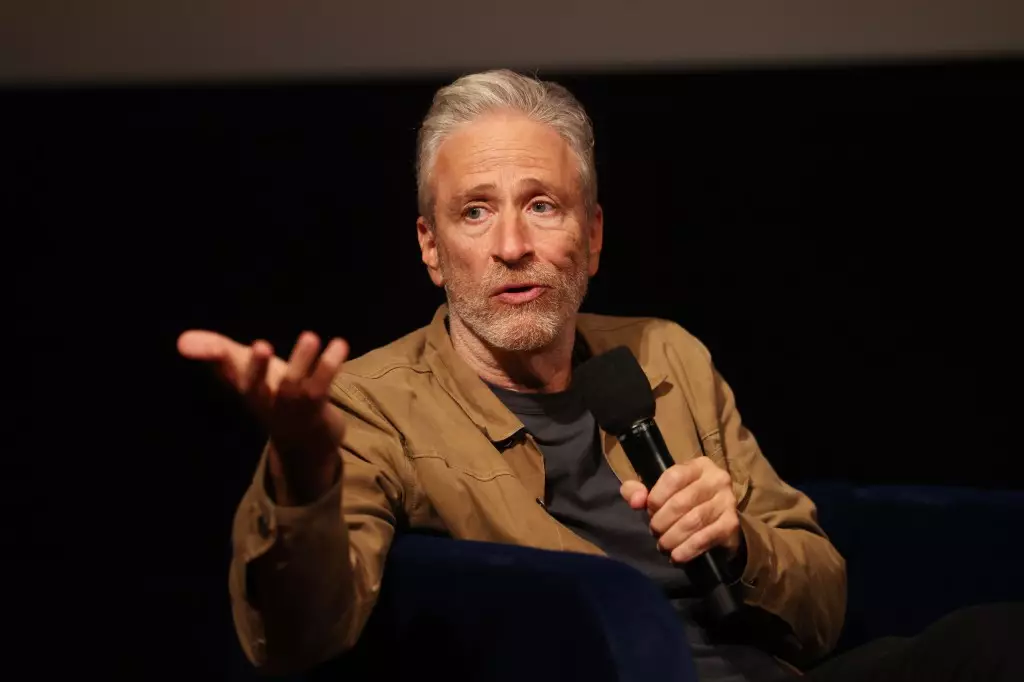In today’s rapidly evolving entertainment landscape, the voices of storytellers face an existential threat. Jon Stewart recently articulated this growing concern with fervor, emphasizing how the encroachment of technology giants like Apple, Netflix, and Amazon is stifling the opportunities available to writers. Stewart’s assertion—that losing writers’ influence is a profound loss—highlights a crucial shift in the industry, one that threatens the very fabric of creative expression. When tech companies prioritize content production over artistic integrity, the nuances of storytelling become overshadowed by algorithms and financial motivations. This alarming trend raises essential questions: Are we willing to sacrifice the artistry of writing at the altar of efficiency?
The Artistry of Connection
Stewart’s remarks resonate deeply with those who believe in the power of storytelling as a means of connection. He eloquently stated, “We cling onto this idea that what we do is a craft.” Writing is inherently relational, serving as a bridge to foster understanding and provoke thought among audiences. Yet, as tech companies streamline their operations, often reducing collaborative writers’ rooms to mere shadows of their former selves, the collaborative spirit that nurtures innovation in storytelling could vanish. Stewart reveals a stark reality faced by many reputable writers: tech-driven decisions can dilute their creative contributions, rendering their roles almost redundant in favor of cost savings. In this draconian landscape, art may lose its most vital essence—humanity.
Community and Revival through Art
Stewart’s observations regarding the palpable need for community through shared experiences are particularly poignant. In a world often marked by isolation and disconnection, he notes that live audiences still crave that raw, unfiltered human interaction that only the performing arts can provide. There exists a magnetic energy in the room during live shows, a revival of sorts that snaps people out of solitude and reminds them of their shared humanity. This vitality, he insists, is what prompts artists to persevere—an intrinsic hope that art can restore a sense of belonging amidst chaos.
A Humble Acknowledgment of Growth
Further enriching his narrative, Stewart reflects on his return to The Daily Show and the remarkable growth of his team. It’s remarkable how those who endure in the creative space can elevate their craft, becoming sharper and more insightful with time. This speaks to the resilience inherent in consistent collaboration, presenting a counter-narrative to the isolating practices proliferated by tech entities. Stewart’s uplifting acknowledgment of his colleagues underscores the essential truth: creativity thrives not in isolation, but in supportive community environments where diverse perspectives are celebrated. The presence of dedicated individuals—like Jen Flanz—ensures that the essence of camaraderie and artistic integrity prevails, even as pressures mount.
The Imperative of Protecting Storytellers
Ultimately, as storytellers navigate this precarious intersection between art and technology, a fundamental truth emerges: the preservation of writers is paramount. Their experiences, insights, and emotional resonance enrich our collective cultural narrative. As Stewart so passionately argues, the loss of writers in favor of cost-cutting measures and an impersonal approach to content creation would usher in a creatively barren landscape. Rather than surrender to these shifts, we must collectively advocate for a model that values the intricate artistry of storytelling, ensuring that the vital voices of writers continue to thrive in a world increasingly dominated by technology.

